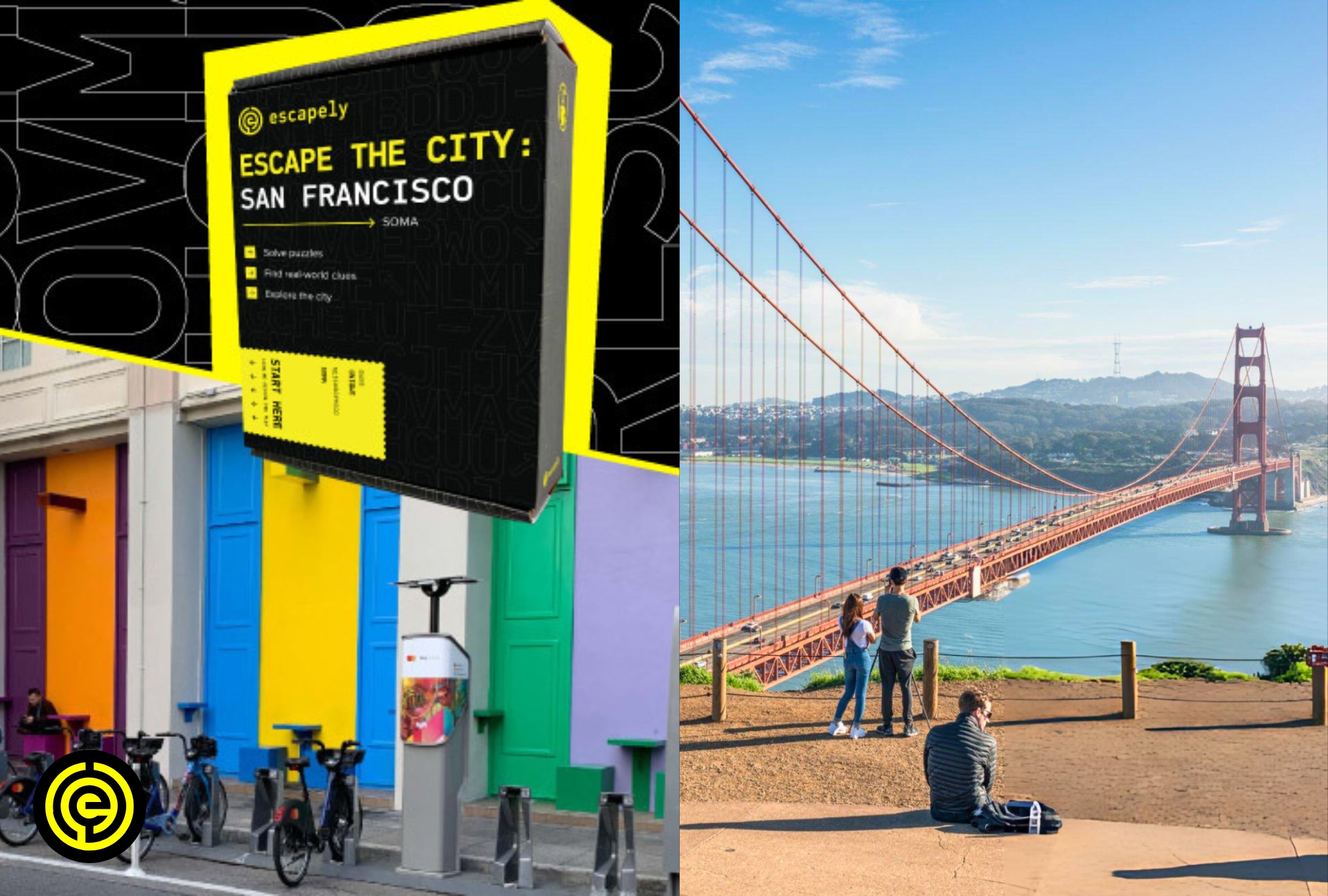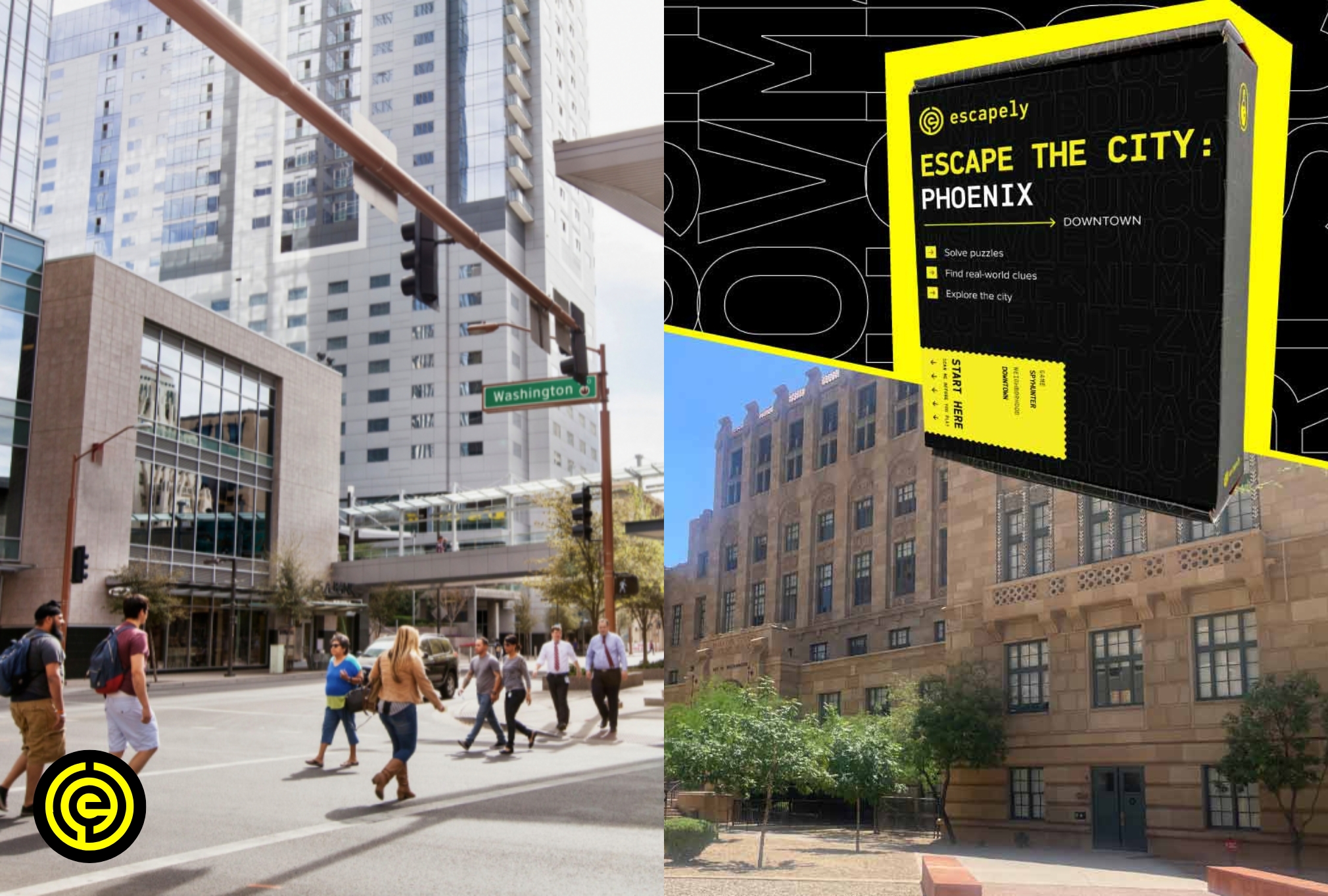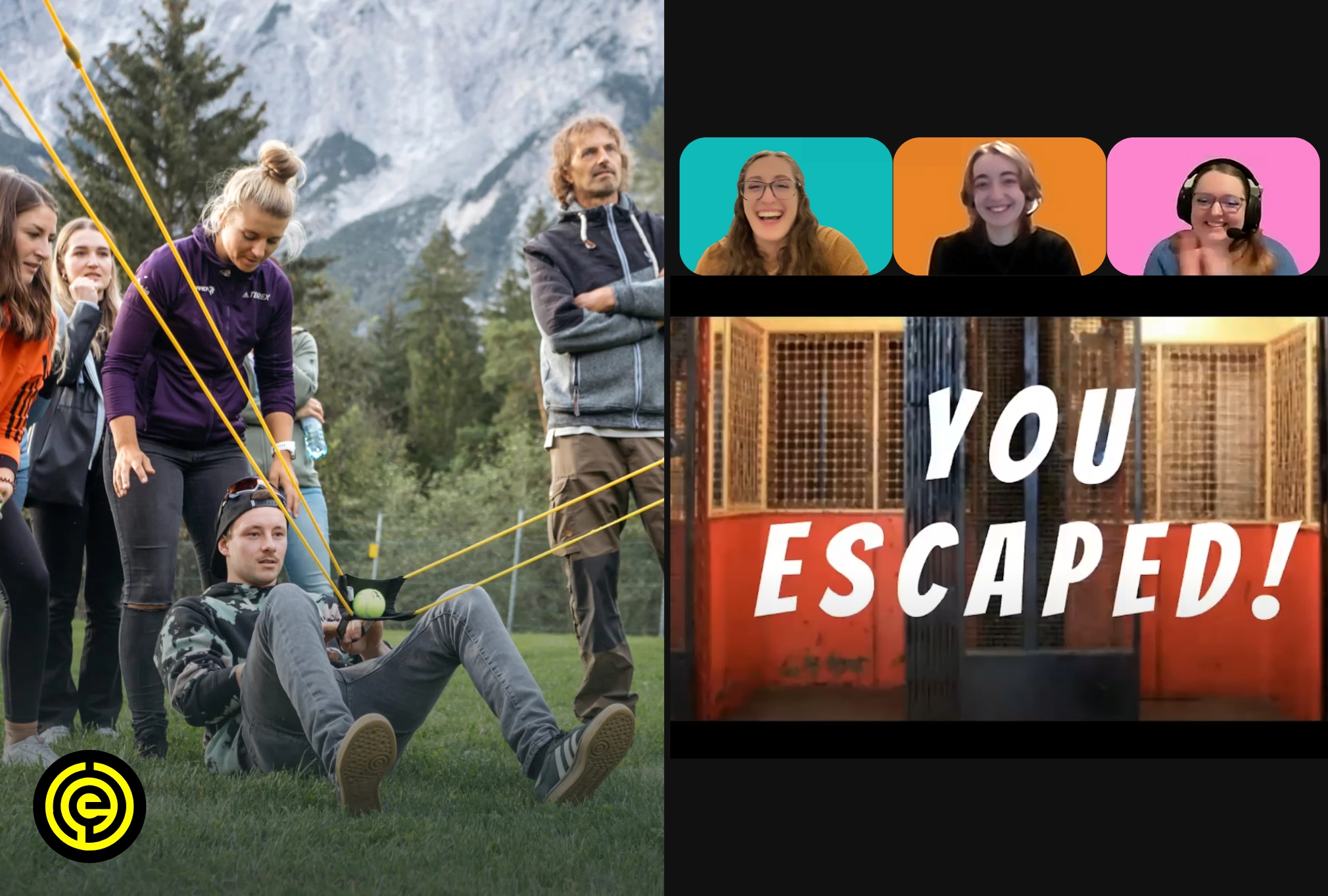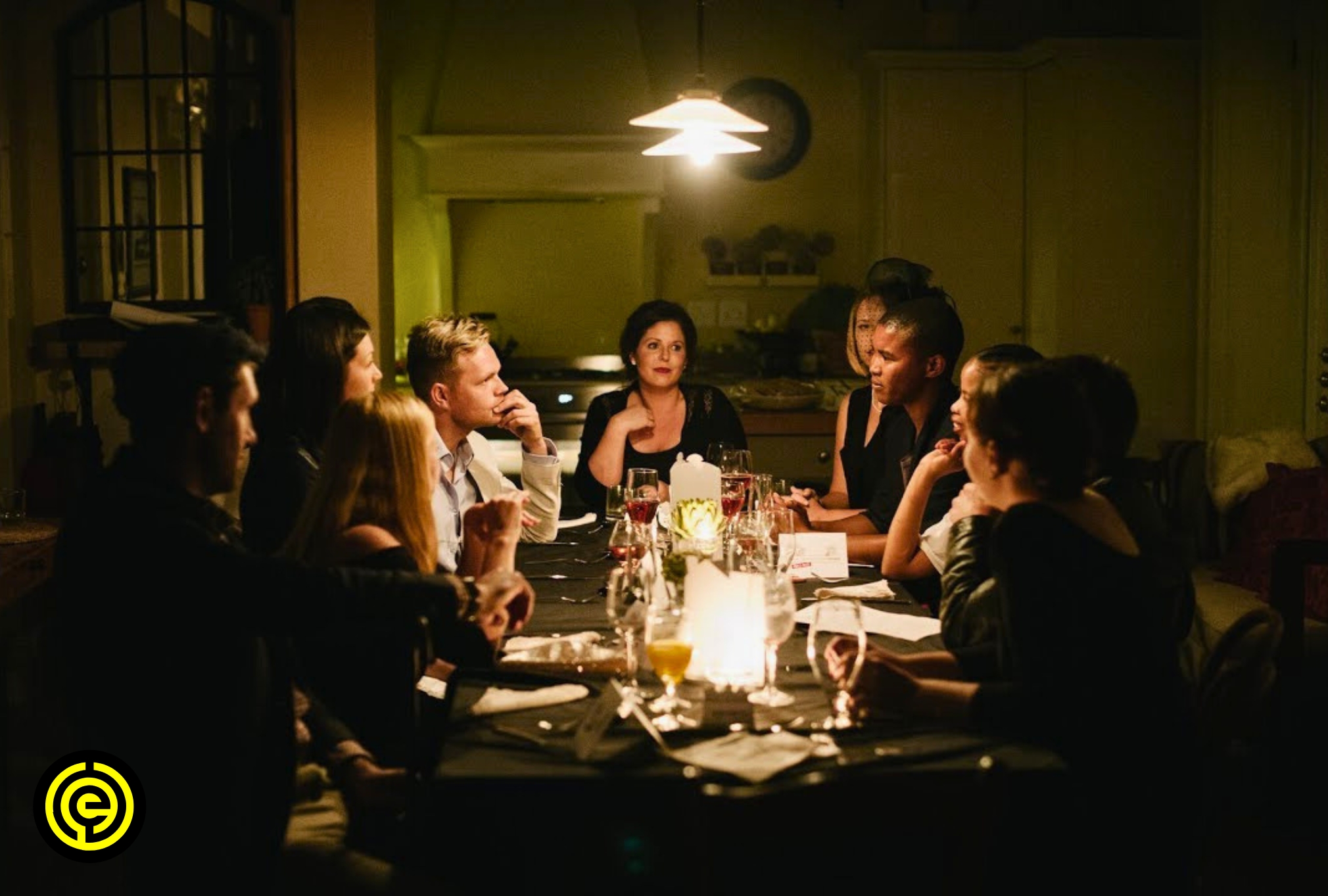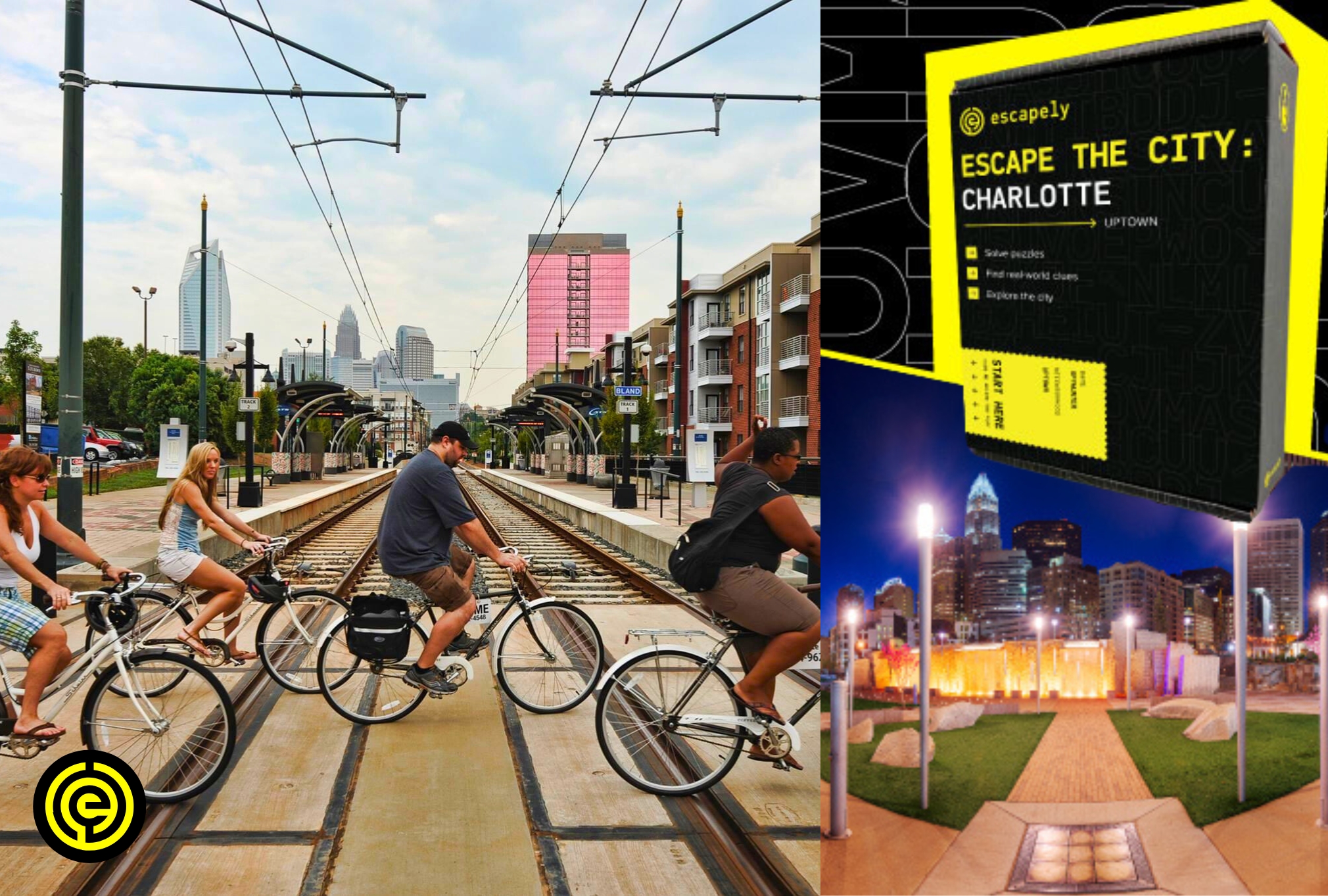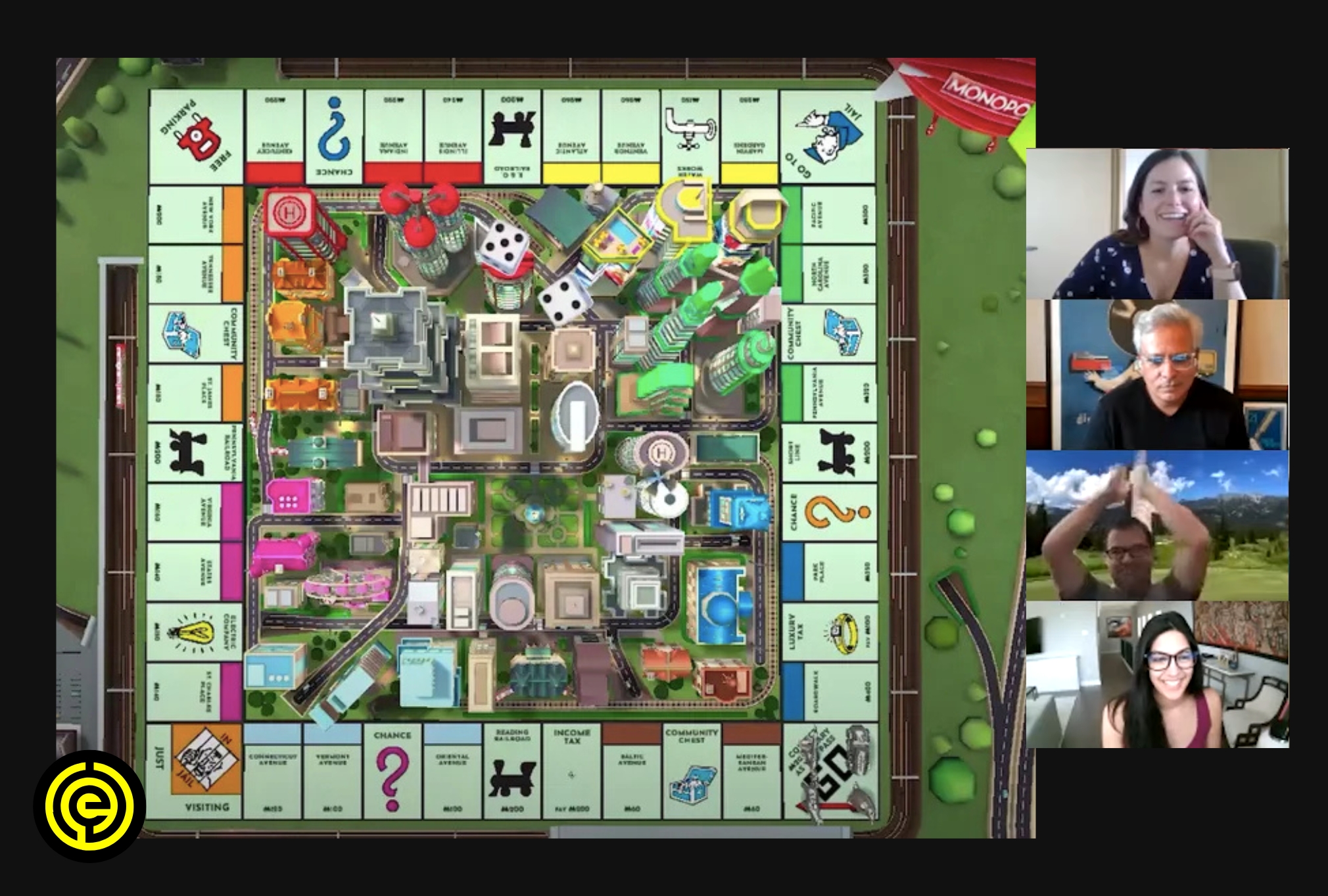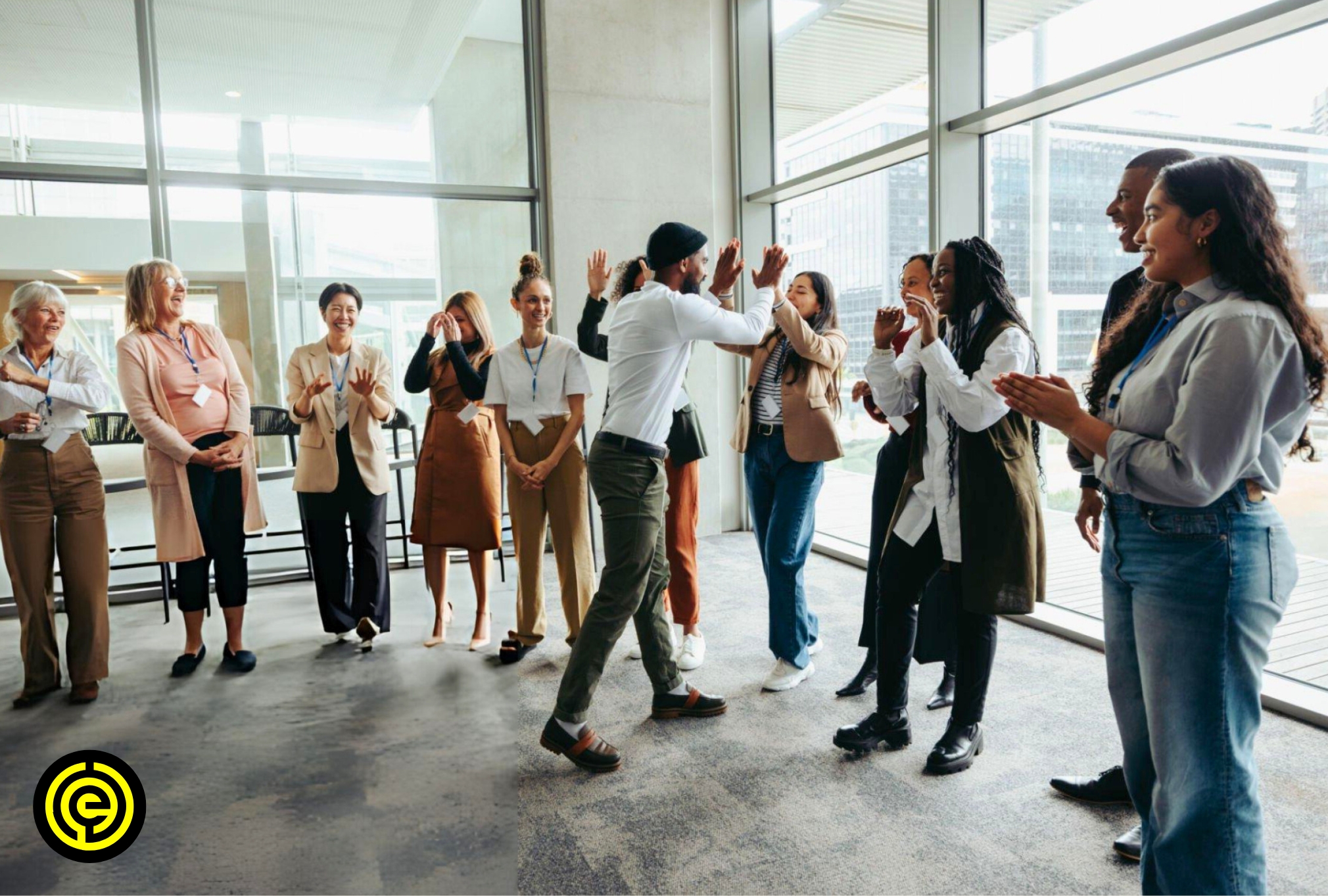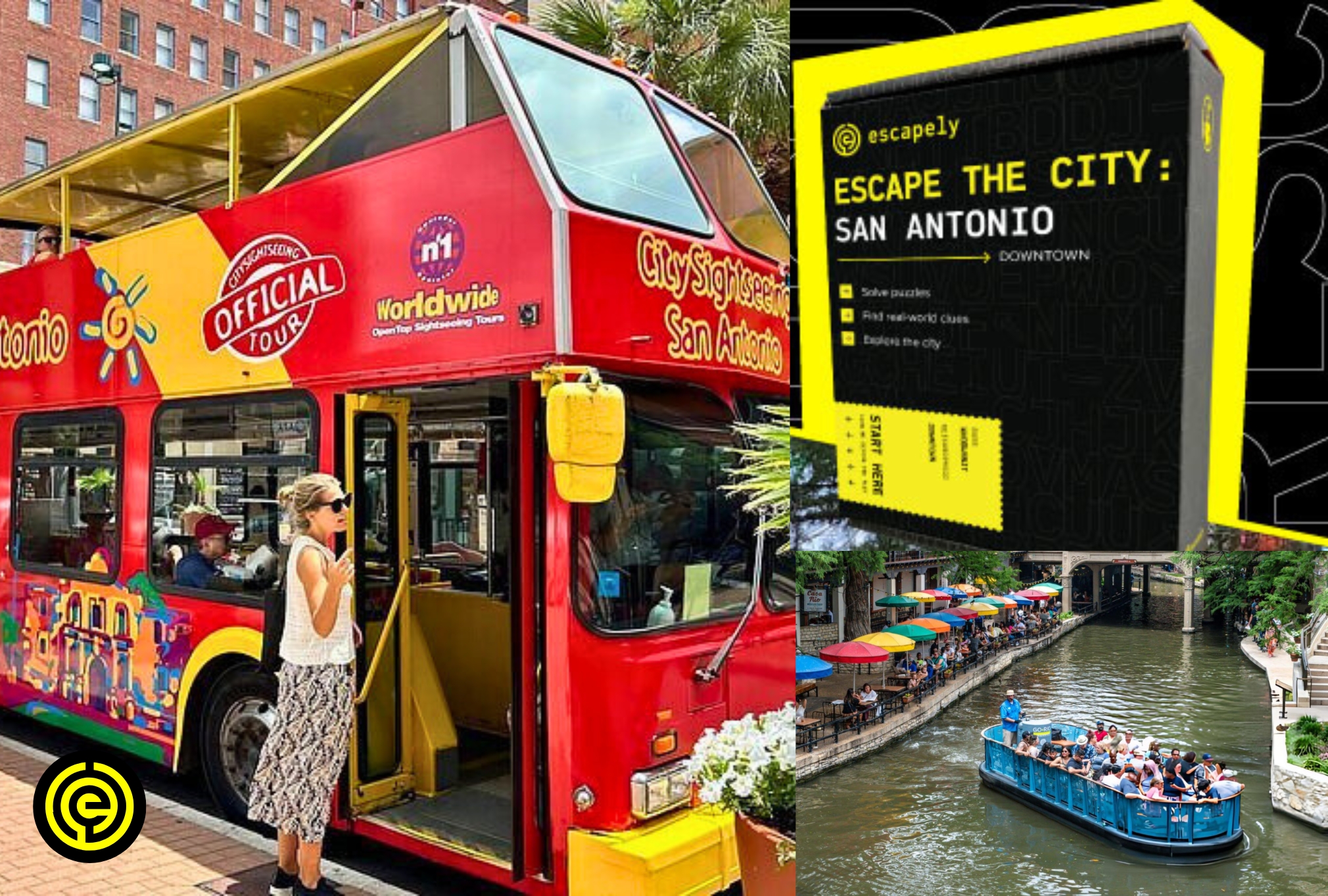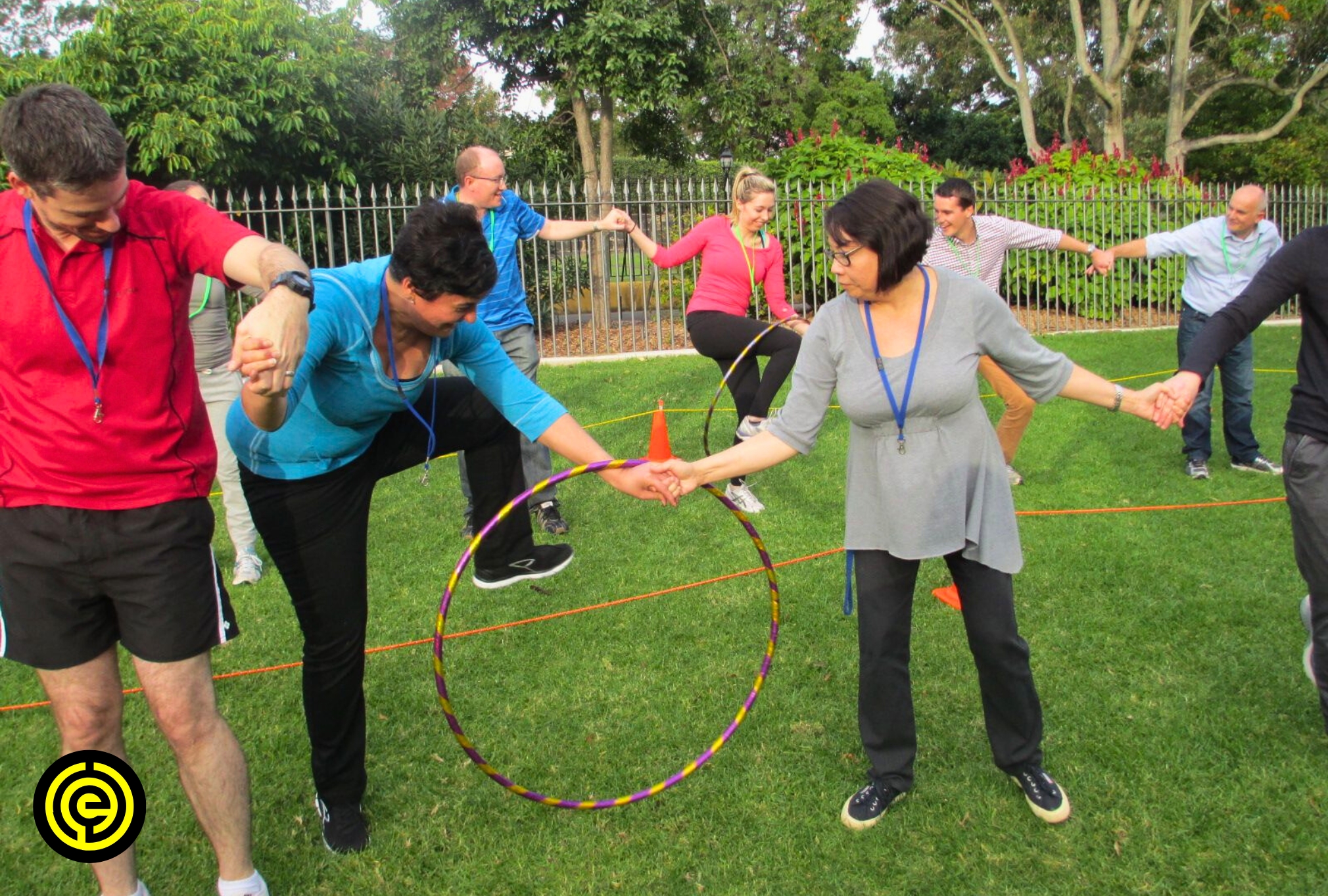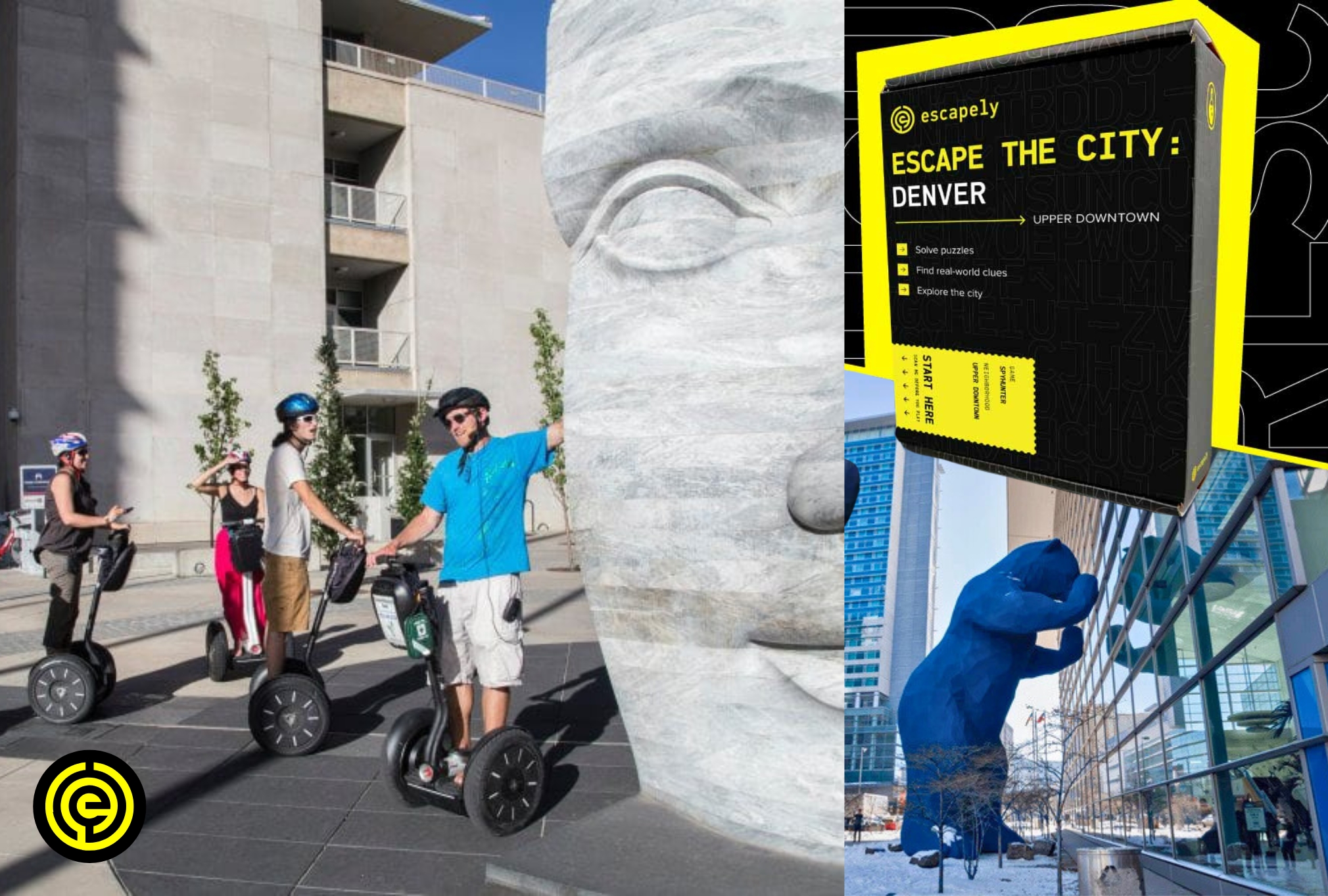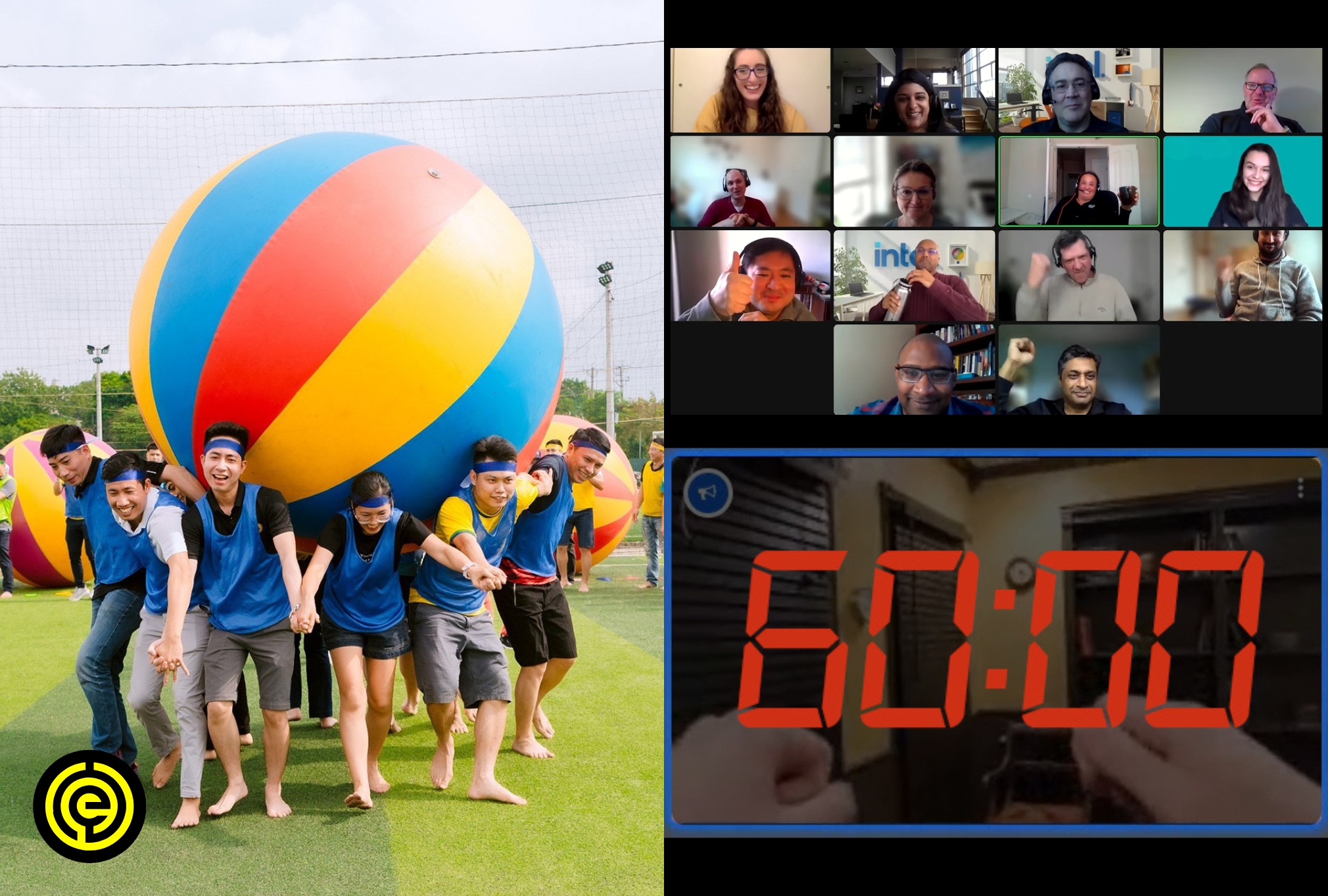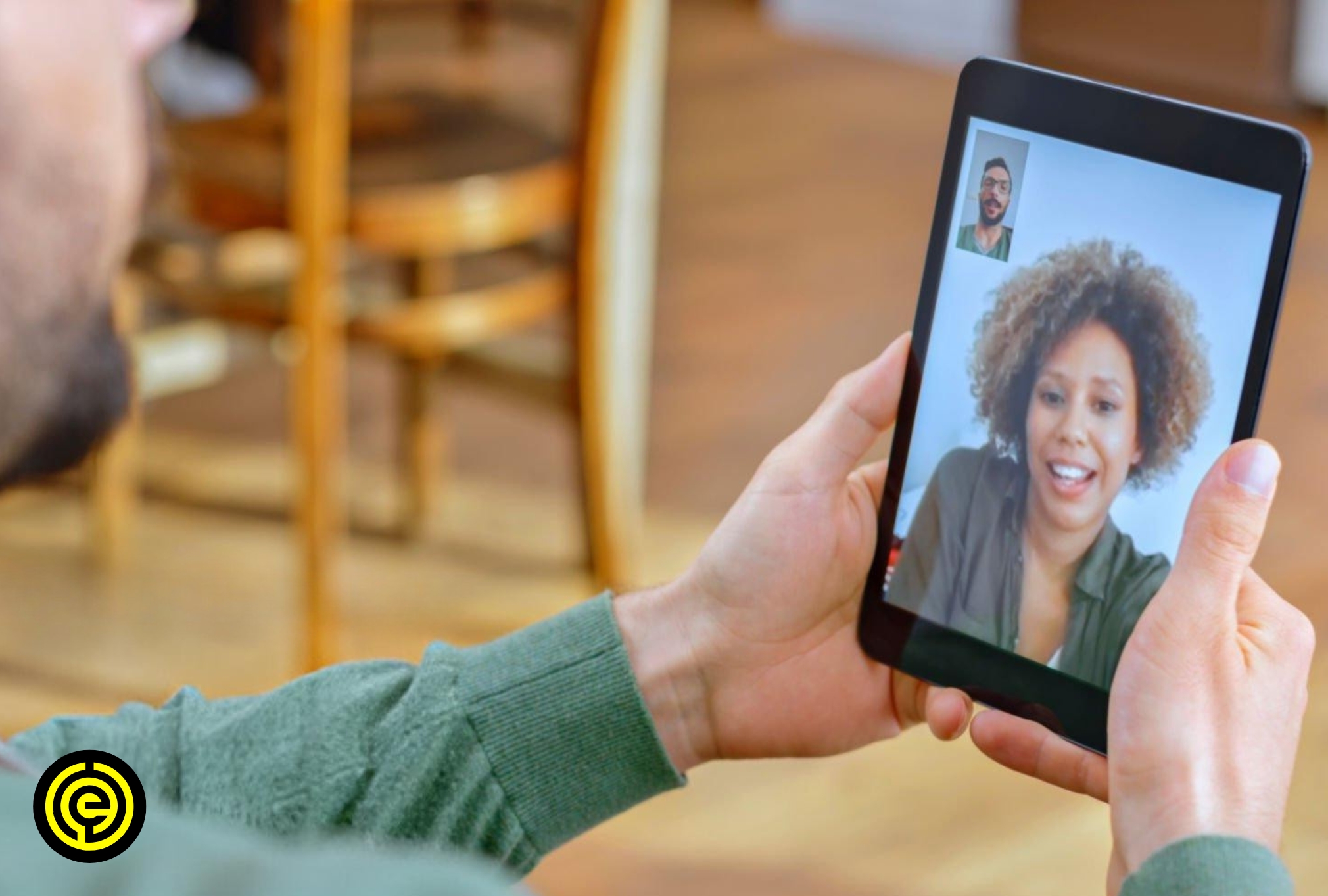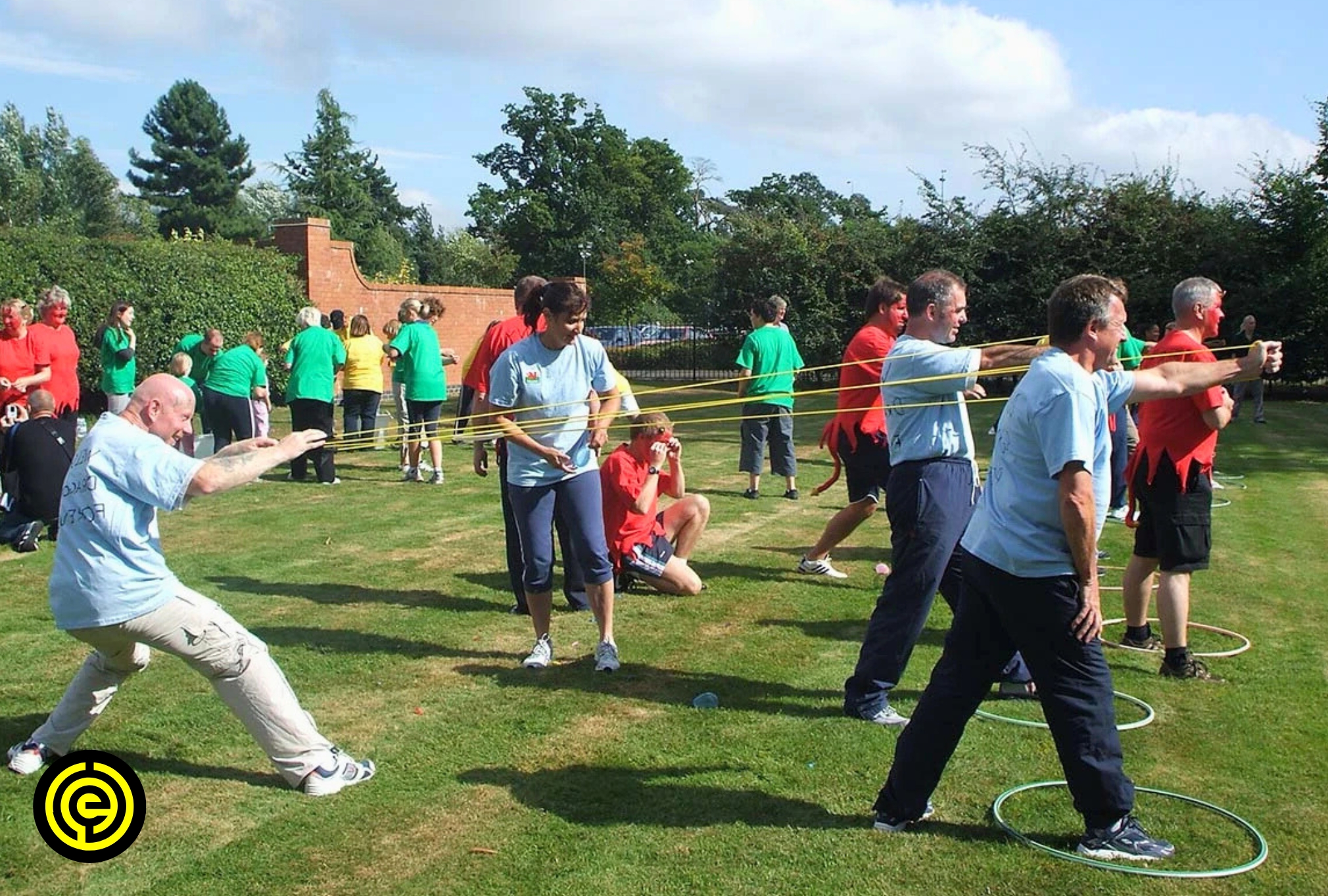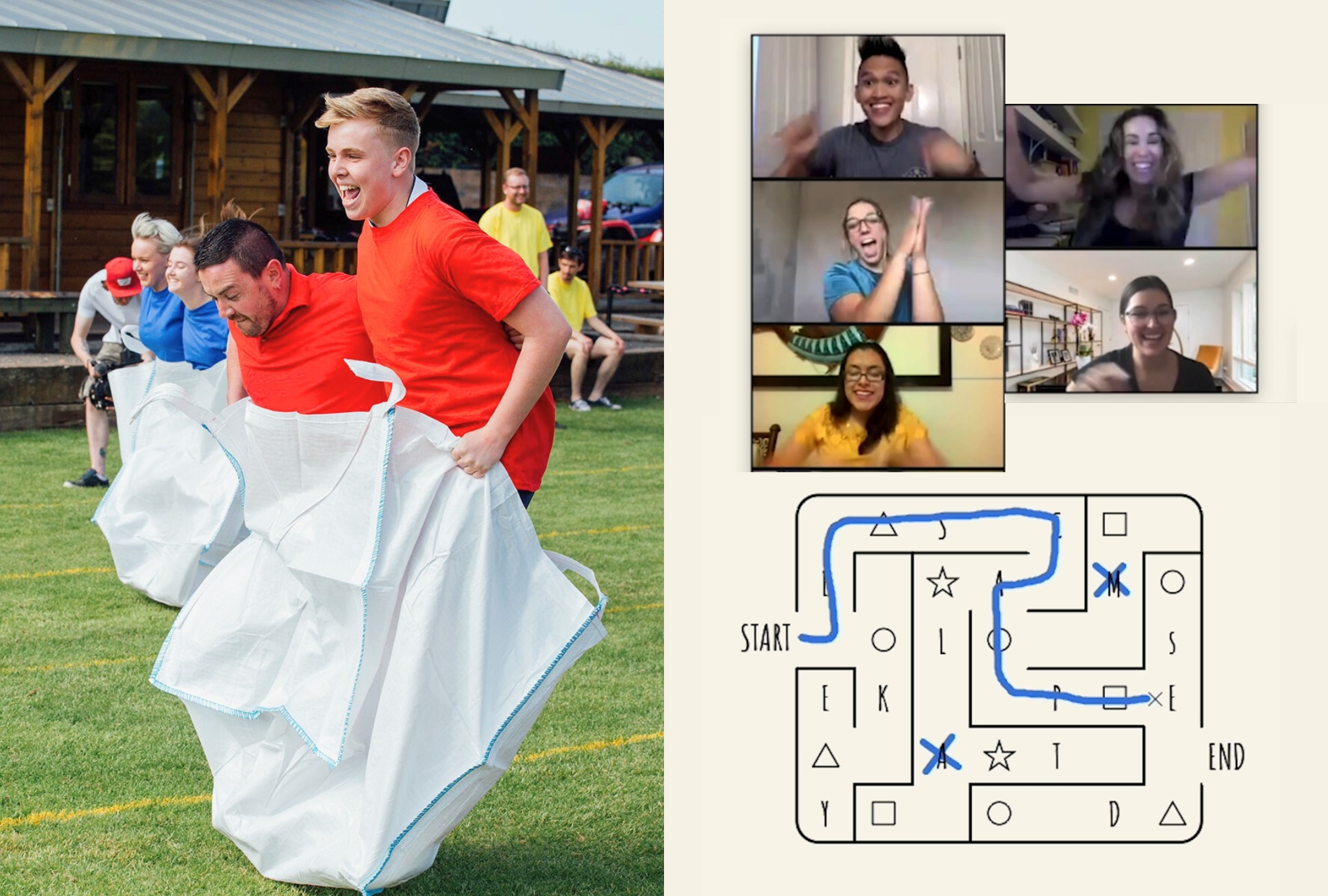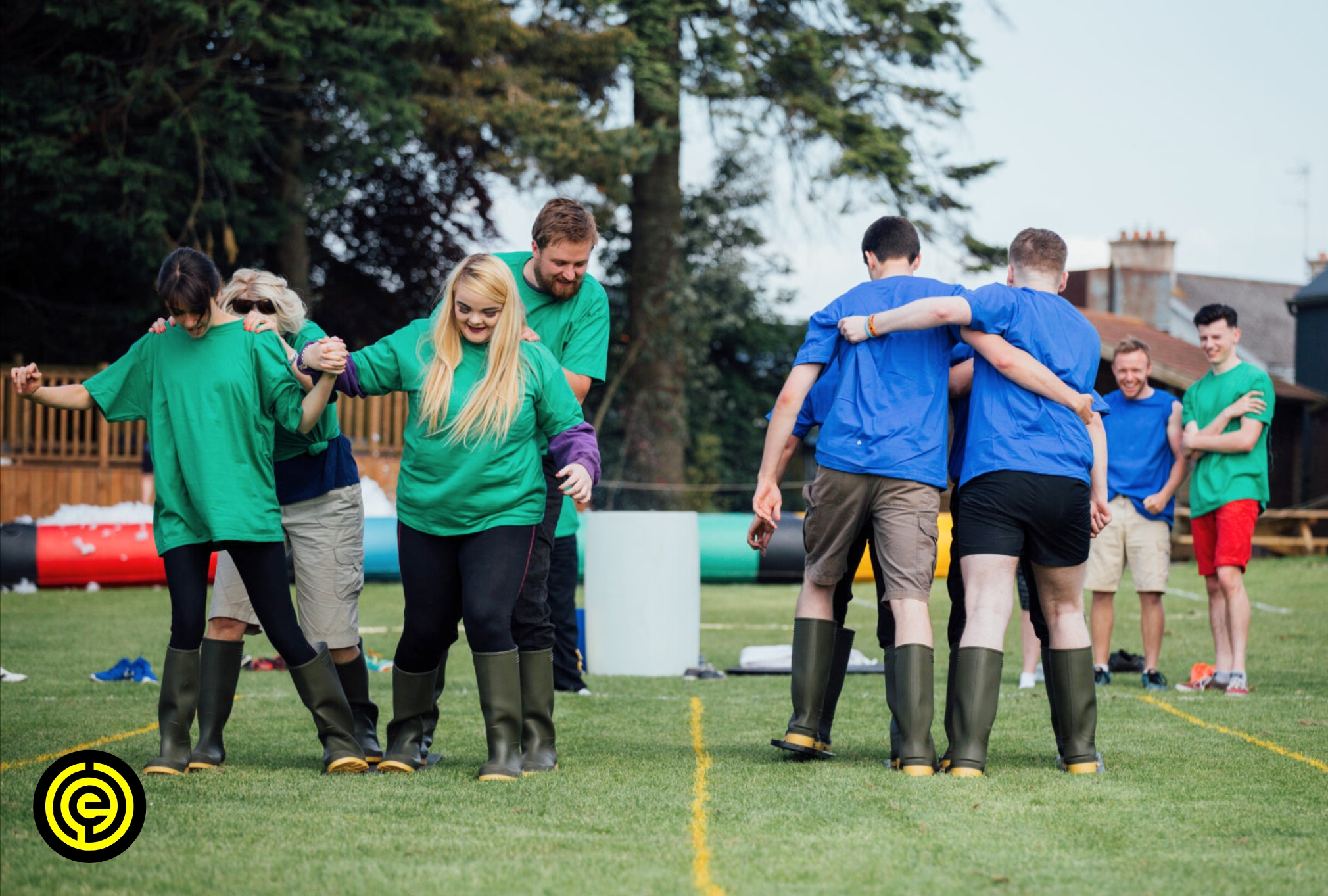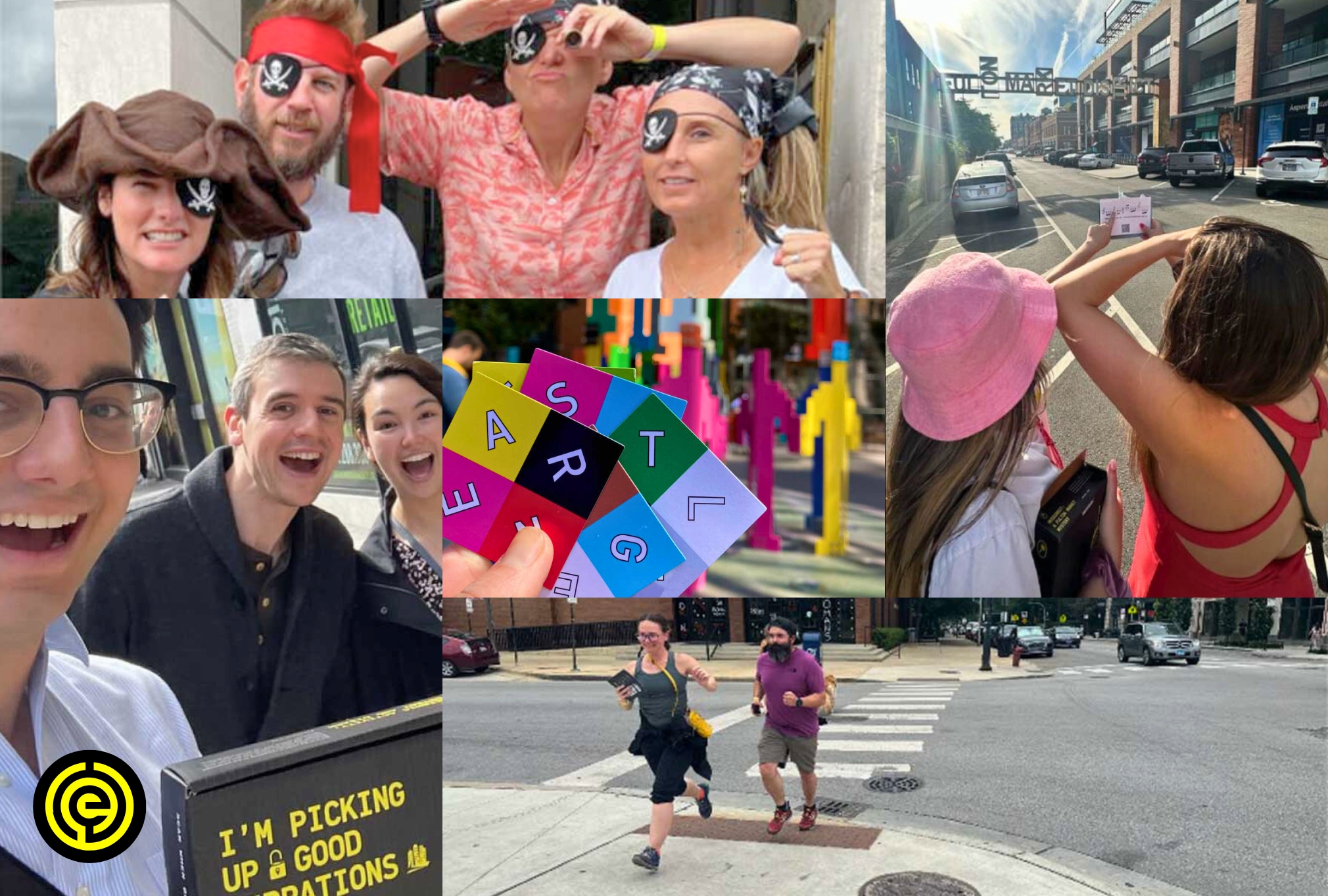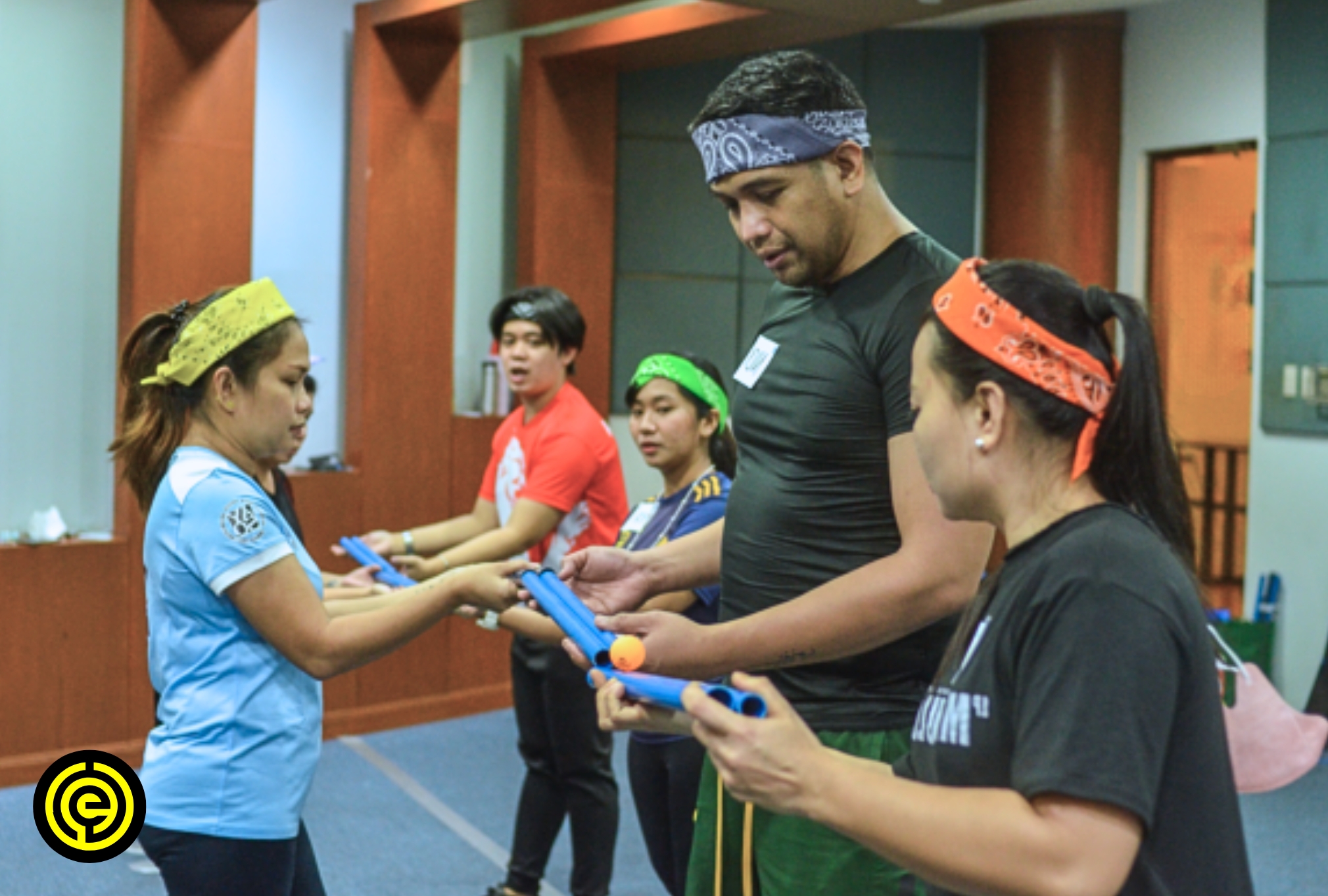Team-building activities foster collaboration, communication, and problem-solving skills in teams. They help create a sense of unity and trust among team members, enabling them to work together more efficiently.
Indoor team building activities offer a controlled, distraction-free environment. This helps teams focus on the tasks and activities at hand and ensures everyone can participate comfortably.
Whether you are looking to improve team morale, enhance communication, or simply have fun, the following indoor games ideas provide effective and engaging ways to strengthen teams.
If you want to try any of these activities in a more controlled environment, you can book a demo with Escapely today.
Here are some indoor group games designed to encourage teamwork, creativity, and collaboration.
1. Escape Room Challenge
Escape rooms ask teams to solve puzzles and unlock clues within a set time limit.
The goal is to escape a locked room or complete a series of challenges by working together, using their collective knowledge and skills. This creates an exciting, immersive experience where every team member contributes.
Both live and virtual escape rooms offer valuable experiences.
In a live setting, participants engage in a physical space. This allows for direct interaction and hands-on problem-solving.
Conversely, virtual escape rooms allow teams in different locations to collaborate. This makes them accessible for remote teams while still fostering engagement and teamwork.
This activity encourages communication, problem-solving, and delegation of tasks in high-pressure situations.
Team members must rely on each other’s strengths, make quick decisions, and trust their colleagues to solve each part of the puzzle. This helps teams work more cohesively under time constraints, simulating real-world challenges.
It is a great indoor game for adults that can be adapted to suit indoor games for groups of various sizes, whether small or large.
If you are searching for a unique escape room experience that lets you explore various hot spots in multiple cities nationwide, try our Escape The City games! They transform public areas into exciting outdoor escape rooms, creating a team experience you won’t forget.
2. Indoor Scavenger Hunt
Scavenger hunts are often held outdoors, but an indoor version offers unique advantages.
While a scavenger quest or hunt allows for exploration and interaction with nature, an indoor setting is more controlled and manageable.
An indoor scavenger hunt can also be adapted for spaces like offices or virtual settings, offering flexibility and convenience.
Participants race to find hidden items or complete challenges within a designated area. In an online scavenger hunt, team members might search for specific objects in their homes or complete virtual tasks.
Regardless of the setting, this activity encourages engagement as teams work against the clock to succeed.
An indoor scavenger hunt promotes teamwork, strategic thinking, and collaboration. Team members often split tasks, delegating roles to maximize efficiency.
This division of labor helps teams strategize and complete the hunt together. It is also a great option for big group indoor games, even in compact settings, making it one of the most adaptable indoor games for large groups in small areas.
3. Office Trivia Game
In office trivia, teams answer questions on various topics. These can range from company history to general knowledge.
The questions can be tailored to suit the group, allowing for a mix of work-related themes and fun, lighthearted topics. This creates an engaging way to test knowledge while fostering friendly competition.
Trivia boosts communication, enhances team bonding, and fosters a fun and competitive atmosphere.
Whether conducted in person or as a virtual trivia game, it encourages teams to work together, share knowledge, and think quickly.
This competition helps create a lively environment and strengthen relationships between team members.
4. Mystery Dinner
In this indoor activity, participants are invited to a dinner. There, they must solve a fictional mystery or complete themed challenges.
Often designed similarly to a virtual murder mystery, participants are given roles and clues to act out during the event. This makes the experience immersive and interactive.
The dinner setting adds a unique social element that allows for informal discussions and teamwork.
This activity encourages creative, collaborative problem-solving as participants work together to uncover clues.
Teams must analyze the provided information and communicate effectively to solve the mystery.
The combination of a fun narrative and a competitive element fosters engagement and teamwork in a relaxed yet challenging environment.
Interested in trying out these fun indoor team building activities? Book a demo to learn more about our many team building games, perfect for both in person and remote teams.
5. Lego Building Challenge
In this challenge, teams are given limited time to build specific structures with Lego blocks or any similar building blocks.
Each team is provided with the same materials, and they must collaborate to create the tallest tower, a bridge, or another specific design.
The time limit adds excitement and urgency, which pushes teams to work quickly while maintaining quality.
This activity encourages creativity, collaboration, and problem-solving as teams create their designs.
To complete the challenge, participants must communicate their ideas and divide tasks effectively. It also requires strategic thinking, but with a focus on design and innovation rather than solving a puzzle.
6. Two Truths and a Lie
Two Truths and a Lie is a classic icebreaker where team members share two true facts and one lie about themselves. Other players will try to guess which is the lie.
This simple and fun activity helps teammates learn trivia about each other while keeping the setting light and playful. The challenge lies in making the lie believable enough to confuse others.
This fun icebreaker fosters communication and helps team members learn more about each other.
It encourages interaction and opens up conversations, allowing team members to connect on a personal level. The game creates a relaxed environment that can strengthen relationships within the group.
7. Blindfolded Obstacle Course
In this activity, blindfolded players explore an obstacle course with help from their teammates.
The course can be set up with various obstacles. Exploring it will require precise directions from team members to help the blindfolded player reach the finish line.
The activity emphasizes teamwork as success depends entirely on effective communication.
This activity builds trust, sharpens communication, and promotes leadership between team members. To succeed, all participants need to either rely on or provide clear instructions.
The blindfolded player must trust their teammates completely, while those providing guidance must lead confidently and communicate clearly.
It reinforces the importance of clear and direct communication in team dynamics.
8. Pictionary
This classic game involves teams competing to draw and guess words or phrases in a limited time.
One person draws a picture when given a word or phrase, while the rest of the team guesses what it is before time runs out.
The simplicity of the game makes it easy to engage everyone, regardless of their skills.
This activity boosts creativity, teamwork, and quick thinking as players try to convey ideas.
It encourages team members to think outside the box and communicate through non-verbal cues, fostering quick decision-making and collaboration.
The fast pace adds excitement, while the challenge of analyzing drawings keeps the atmosphere lively and fun.
9. Role Reversal
In this activity, two colleagues switch roles for a day or during a mock project to take on each other’s responsibilities.
Employees can take on tasks from other departments or even leadership roles, letting them step out of their usual routines.
The temporary change encourages participants to adapt to the challenges their colleagues face.
This activity promotes empathy, collaboration, and a deeper understanding of team dynamics by allowing individuals to step into each other’s shoes.
Experiencing different roles will help team members better understand their colleagues, which can foster mutual respect and appreciation.
It strengthens company cohesion and can highlight areas that need improved communication and support.
10. The Marshmallow Challenge
In the marshmallow challenge, teams build the tallest structure they can with spaghetti, tape, and marshmallows.
The time and material limits mean participants must think strategically to construct a stable tower.
This challenge is both fun and difficult and requires careful planning.
This challenge encourages creativity and iterative problem-solving as teams experiment with different designs.
Participants must communicate effectively, test ideas, and make adjustments as needed while building.
11. Office Charades
In charades, players act out scenarios or words without speaking, while others guess what they are portraying.
Players convey ideas using gestures, facial expressions, and body language. Charades are easy to set up and play, regardless of skill level.
This activity is a fun, morale-boosting game that encourages communication.
Interpreting nonverbal cues strengthens teams’ communication skills and creative thinking. It also improves team cohesion while remaining lighthearted.
Interested in trying out these fun indoor team building activities? Book a demo to learn more about our many team building games, perfect for both in person and remote teams.
12. Human Knot
In this game, team members form a “knot” by standing in a circle and holding hands with two different people. The group must untangle themselves to create a single, unbroken circle.
The challenge requires careful movement and communication to avoid further complicating the knot.
This activity encourages patience, teamwork, and problem-solving as the group untangles themselves.
Participants must listen to one another, think strategically, and be patient while working through the challenge.
The Human Knot helps strengthen bonds as team members find a solution through cooperation and persistence.
13. Paper Plane Contest
Teams compete to build paper airplanes that can fly the furthest distance or perform tricks, like loops or long glides.
Each team is given a limited amount of time and materials to design and create their planes, which adds time pressure. This activity encourages participants to think about aerodynamics and design efficiency.
This activity fosters creativity, problem-solving, and teamwork as participants optimize their planes.
Team members must experiment with different folding techniques and make adjustments as necessary.
The friendly competition encourages innovation while improving communication and cooperation skills among team members.
14. Puzzle Challenge
In puzzle challenges, teams compete against each other to complete a large jigsaw puzzle within a set time limit.
Other variations of this challenge include completing a custom puzzle with hidden clues or solving smaller puzzles to unlock the next stage.
These adaptations help make the traditional jigsaw format more engaging.
This activity enhances collaboration, communication, and time management as teams finish the puzzle.
Participants must work together efficiently to finish on time. This involves dividing tasks and ensuring that everyone contributes to the overall goal.
Proper planning and communication will help teams complete the puzzle and strengthen their problem-solving abilities.
15. Tower Building with Cups
In this activity, teams stack plastic cups into the tallest tower possible. It often has additional challenges like not using their hands or only using specific tools like strings or rubber bands.
It tests the team’s ability to strategize while balancing speed and stability. These restrictions make the task more difficult and require innovative solutions.
This simple but engaging activity encourages teamwork, creativity, and problem-solving skills.
Team members must communicate effectively and adapt quickly to unexpected challenges. It fosters a collaborative environment where creative thinking and strategic planning are essential.
16. Collaborative Art Project
Teams collaborate to create a piece of artwork, such as a mural or collage.
Each team member has their own part of the project, like drawing, painting, or assembling materials.
The final artwork reflects the collective creativity and effort of the group, and their ability to work toward a common goal.
This activity improves creativity and communication as team members provide ideas to form a cohesive project.
Participants must brainstorm, share ideas, and adapt to each other’s styles and suggestions. By working together, the team learns to blend their strengths to create something meaningful.
17. Improv Workshop
Improv workshops guide participants through several acting exercises. These exercises typically require quick thinking and group collaboration.
They often involve spontaneous scenes or solving challenges on the spot, with no script or preparation.
The unpredictable nature of improv keeps participants alert and engaged. It encourages colleagues to rely on their instincts and each other.
It builds confidence, communication, and creativity in a fun, dynamic environment.
Participants must listen carefully, adapt quickly, and support their teammates to keep the scenes going.
Improv encourages a positive and open mindset, making it an excellent way to boost team bonding and problem-solving skills.
18. Balloon Relay
In this relay, teams must keep a balloon in the air, often using only specific parts of their body, such as their heads or feet.
Players are challenged to maintain control of the balloon without dropping it before passing it to the next team member. The game’s simplicity makes it accessible to all skill levels and adds an element of fun.
This playful competition promotes coordination, communication, and teamwork in a lighthearted setting.
Participants must strategize to ensure smooth passes while keeping the balloon airborne.
The relaxed nature of the activity helps foster bonding and cooperation between teammates.
19. Team Debate
In this activity, teams will argue either for or against a specific topic. This encourages respectful dialogue and consideration of different perspectives.
The debate format allows participants to defend their stances and listen to opposing viewpoints.
Topics can be either lighthearted or serious, depending on the goals of the exercise.
This activity fosters teamwork, critical thinking, and communication as teams work on an argument.
Participants must research, organize their thoughts, and support one another to build a strong case.
A debate encourages clear communication and strategic thinking. This can help teams develop transferable problem-solving and decision-making skills.
20. Personality Quiz and Team Discussion
Here, team members will take personality quizzes and share the results. The results will be discussed to build an understanding of different working styles.
These quizzes can highlight traits like leadership, communication preferences, and decision-making styles. They can provide insights into how each person approaches tasks and interacts with the team.
The post-quiz discussion allows for reflection on how these traits affect teamwork.
This activity encourages empathy and communication between teammates. It can also help the team align based on individual strengths and differences.
Understanding each other’s personality types can help team members adjust their approaches to better work together. This fosters a more collaborative work environment.
Interested in trying out these fun indoor team building activities? Book a demo to learn more about our many team building games, perfect for both in person and remote teams.
Why Indoor Team Building Activities Matter
Indoor team building activities are great for fostering collaboration regardless of environmental limitations.
Whether held in an office or a conference room, these activities create a controlled setting where teams can focus on the task at hand. This ensures consistent participation and engagement.
These activities help teams build trust, improve communication, and align on shared goals while fostering creativity and problem-solving skills.
Frequent team building exercises can lead to stronger team dynamics and greater productivity.
Team members who communicate effectively are more likely to work better on everyday tasks, which can improve individual and group performance.
How to Choose the Right Indoor Team Building Activity
To choose the right indoor team building activity, consider factors that align with your team’s needs and objectives.
Consider the following when choosing a team building activity for your team.
- Consider Team Size and Dynamics: Choose activities that accommodate the number of participants and team dynamics.
- Assess Available Times: Some activities may require more time to plan and execute. Pick something that fits your schedule.
- Define Specific Team Goals: Identify what you hope to achieve at the end of the activity. This could include improving communication, boosting morale, or encouraging creativity. Select activities that align with these goals.
- Ensure Everyone Participates: Pick activities that require active involvement from team members to foster collaboration.
- Match the Activity to the Team’s Comfort Level: Ensure the activity is suitable for your team’s comfort zone. Take individual preferences and physical abilities into account.
- Cultural and Company Values Alignment: Choose activities that reflect company values and culture. They can also reinforce key messages and organizational goals.
- Balance Fun With Purpose: Make the activity enjoyable and ensure it serves a meaningful purpose.
- Gather Team Input: Ask the team for their preferences or ideas. This will increase buy-in and participation.
- Location and Space Constraints: Ensure the chosen activity fits the available space. Before the activity date, plan for any logistical limitations or special setup requirements.
By considering these factors, you can select activities that are engaging, effective, and aligned with your team’s goals, ensuring a successful team building experience.
Frequently Asked Questions (FAQs)
This section will cover common questions about indoor team building activities.
What Are the Benefits of Team Building in the Workplace?
Team building in the workplace improves communication, collaboration, and planning skills and can also enhance employee motivation.
Team building offers teammates an opportunity to connect in a fun and different setting. This leads to more open communication and smoother workflow in the office.
What Is the Most Important Thing in Team Building?
The most important factor for team building is open and honest communication.
Encourage team members to share their thoughts and ideas freely. This will help build trust, promote collaboration, and allow for constructive feedback.
All of the above will strengthen overall teamwork.
How Do You Encourage Teamwork Virtually?
You can use tools like project management software to streamline communication and collaboration. You can also encourage team members to turn on their cameras during meetings to build stronger connections.
Additionally, fostering collaboration skills and creating a team agreement can help set clear expectations and enhance virtual teamwork.
Key Takeaways on Indoor Team Building Activities
Indoor team building activities are a valuable tool for enhancing communication, trust, and teamwork in a fun and controlled environment.
Incorporating different activities can keep teams engaged and motivated, leading to stronger relationships and improved workplace performance.
Regular team building promotes a positive work culture and ensures that team members are aligned. It can also help them collaborate more effectively on future projects.
These activities contribute to a more cohesive and productive team dynamic.
Interested in trying out these fun indoor team building activities? Book a demo to learn more about our many team building games, perfect for both in person and remote teams.










